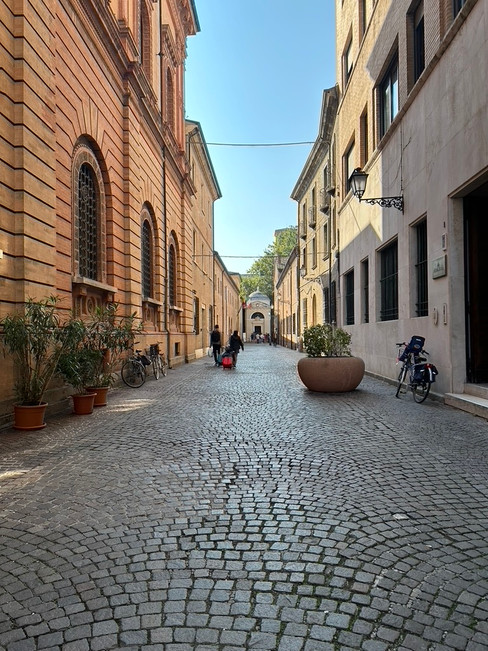RAVENNA REDISCOVERED
- Zee Coleman

- Dec 13, 2024
- 3 min read
A Journey Through Time and Mosaics

Throughout my recent years of traveling to tile shows in Italy, I’ve often found myself in a whirlwind—jumping from exhibition halls to meetings, with little time to explore beyond the venue walls. But this year, something shifted. Travel finally feels like travel again. The world seems ready to embrace each other, and crowds don’t feel as intimidating. So, I told my husband, “Let’s do it. Let’s get out of Bologna and explore.” And there it was—Ravenna, a town that had been on my list for years, calling my name with its mosaic marvels.

Ravenna is a charming little town, and the best part is that you can easily navigate it all on foot. One of my personal joys in any new place is just wandering. No plan, no map—just walking through narrow streets, soaking in the local atmosphere. And Ravenna? Well, it’s like walking through a dream of history and art. Every corner, every street offers something extraordinary. The architecture alone is jaw-dropping. There are over 30 historical buildings and sites that showcase some of the most intricate mosaics you’ll ever see.
What struck me most about Ravenna is the pace. It’s slower than Milan or Bologna, and you can’t help but feel the romance of the place. It’s literally a city of poets, and that sentiment stays with you as you wander through the streets. We even visited Dante’s tomb, which was a powerful moment, and somehow, I ended up with a postcard of Gustav Klimt, which felt like a perfect, if random, souvenir.

And just when you think the city is nothing but ancient history, you’ll find a pop of modern mosaic art peeking from a hidden wall or alley, reminding you that Ravenna is still very much alive in the creative world.
As we meandered through the town, everything seemed to beg for a closer look. The contrast of black and white cobblestones, the hand-carved architectural details that adorned unassuming buildings, the ironwork on the lower-level windows meant to protect homes—all these details seemed so intentional, yet casual, as though they’ve always been there without fanfare.
For the mosaic lover, Ravenna is paradise. I’m no Rick Steves, so if you’re looking for the best restaurants, he’s your guy. I, on the other hand, was fully immersed in the art. Ravenna’s churches and mausoleums are adorned with mosaics from the 5th and 6th centuries—masterpieces of Byzantine art and architecture. Having a background rooted in Istanbul and Greece, Byzantine mosaics are familiar to me, but seeing them here, in such a preserved and celebrated way, was an entirely different experience. The natural stone choices, the minute details in the designs—it’s like seeing the art with new eyes, those of a mosaic designer, noticing things I’d never appreciated before.
One thing that I couldn’t help but think about: we often shy away from combining cool and warm tones in the same mosaic or hesitate to use too many different tiles in one space. But here? These ancient artists used every shape, form, and color without restraint. Nothing felt “too busy” or out of place. It was liberating to see. And, quite comically, I had to laugh at how modern we think we are in our designs, yet these buildings remind us that they did it first—centuries ago, no less.
I took a ridiculous amount of photos on this trip, but I want to give you just a taste of what I saw. Here’s a little gallery for you to browse. Enjoy!







Comments